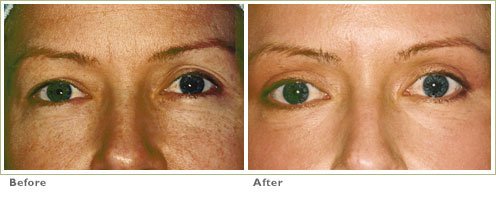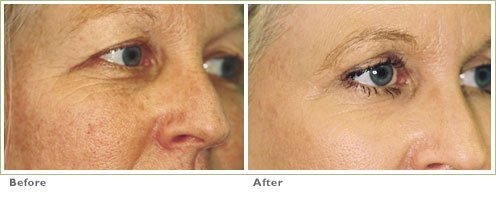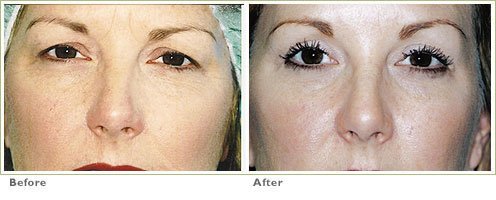Aging Eyelids
About Eyelid Lift (Blepharoplasty)
Sagging or drooping eyelids can make us look and feel older or more tired than we are. The eyes are the first facial features noticed in person-to-person communication and reveal our emotional status as well as our overall well-being. Eyelid surgery can correct these signs of premature aging and restore self-confidence. The results can be a refreshed appearance, with a younger, firmer eye area.
Benefits
- Reduces excessive and sagging eyelid skin
- Can have dramatic results, making eyes look refreshed and more youthful
- Can improve function (visual fields increased)
- Reduces puffiness from fat pads or loss of the natural eyelid crease that creates a tired appearance
- Laser-assisted eyelid tuck reduces bruising, swelling and promotes faster healing
- Laser method tightens skin and reduces wrinkles around eyes
Alternatives
Laser Skin Resurfacing and Brow Lift
How Does it Work?
There are several approaches to blepharoplasty. In upper eyelid surgery, the surgeon first marks the individual lines and creases of the lids in order to hide the incision in one of these natural folds. Excess skin, muscle and fat are methodically removed and very fine sutures are used to close the skin. The procedure takes about an hour and can be performed with local anesthesia on an outpatient basis. A carbon dioxide laser may be employed during the blepharoplasty procedure to cut away excess fat and muscle after the skin incision is made with a scalpel. The laser light may reduce swelling and bruising, and further tighten up the skin and underlying components to enhance results. Patients enjoy lasting results from this procedure, and are pleased with their decidedly younger appearance.
Who is a Candidate?
Because this procedure can be performed using local anesthesia in an outpatient setting, the risks associated with general anesthesia are eliminated. Most healthy individuals can undergo this straightforward procedure.
What can I Expect?
A younger, more rested appearance and a widening of the visual fields.
Results may vary.
Safety & Side Effects
As with all aesthetic surgery, good health and realistic expectations are required for the best outcome. The specific risks and the suitability of these procedures for a given individual will be determined at the time of consultation with the surgeon. All surgical procedures carry a degree of risk. Bruising and swelling can be minimized with ice packs and propping the head up with pillows for the first few nights after surgery. Bleeding, infection and visible scars are very unusual complications. Major complications are exceedingly rare.
Recovery Time
Eyelid skin heals extraordinarily fast, though most patients take four to six days off work. It is very important in eyelid surgery that all sutures be removed at four to six days from the surgery date to reduce the chance of healing with suture tracks.
Does it Hurt?
Local anesthesia is used so that no pain is felt during surgery. Patients are offered a mild sedative, such as Valium or Ativan on the day of surgery for relaxation. Intravenous (i.v.) sedation is available upon request.
Before Treatment Instructions
Avoid medications and supplements that thin the blood for 10 days before the procedure. These include but are not limited to aspirin, Motrin, ibuprofen (Advil), Naprosyn, gingko biloba, ginseng, vitamin E and garlic. Acetaminophen (Tylenol) can be taken as an alternative for aches and pains.
After Treatment Instructions
Your surgeon may suggest the use of a topical antibiotic ointment to be applied to the incision after the procedure, or sometimes tiny, sterile bandages are placed and are to be left on until removed by the surgeon. Eye drops during the day, or a lubricating ointment at night may be prevent dryness of the eyes. Patients must avoid bending over, exercise or heavy lifting for ten days. Avoid blood thinners for one week after the procedure. Head elevation and ice packs should be applied to limit swelling. Camouflage cosmetics can cover any minor swelling or bruising after the first few days. Pain medication is rarely needed. Stitches will be removed in 4-6 days after the procedure.
Who Performs the Treatments?
Dr. Berman
Eyelid Sagging and Puffiness Gallery
Eyelid Lift (Blepharoplasty)
*Results may vary.









